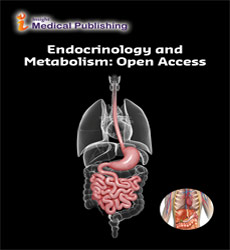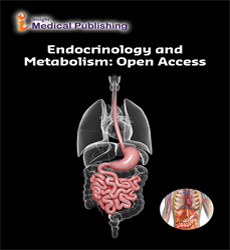Hormones Mechanism of Action along with Intracellular Receptors
Rihard Boen*
Department of Pathophysiology, Purdue University, Indianapolis, USA
- *Corresponding Author:
- Rihard Boen
Department of Pathophysiology
Purdue University, Indianapolis, USA
E-mail: Rihard.Boen@colostate.edu
Received Date: July 05, 2021; Accepted Date: July 19, 2021; Published Date: July 26, 2021
Citation: Boen R (2021) Hormones Mechanism of Action along with Intracellular Receptors. Endocrinol Metab Vol. 5 No.4:e172.
Description
Receptors for steroid and thyroid hormones are present inside the target cells, in the cytoplasm or in the nucleus of the cell. Their performance as ligand-dependent transcription factors. It is to mention that the hormone-receptor complex binds to promoter regions of responsive genes and revive or sometimes stop transcription from those genes.
Thus, the mechanism of action of steroid hormones is to modulate organic phenomenon in target cells. By selectively affecting transcription from a set of genes, the concentration of these respective proteins are altered, which distinctly can change the phenotype of the cell.
Structure of intracellular receptors
Steroid and hormone receptors are projection of an outsized group ("superfamily") of transcription factors. In few cases, multiple sorts of a given receptor are expressed in cells, adding to the complexity of the response. All of these receptors are composed of one polypeptide chain that has, within the simplest analysis, three distinct domains: The amino-terminus: In general cases, this region is involved in activating or stimulating transcription by interacting with other components of the transcriptional machinery. The sequence is very variable among different receptors.
DNA binding domain: Amino acids during this region are liable for binding of the receptor to specific sequences of DNA. The carboxy-terminus or ligand-binding domain: It is often the region that binds hormone. In inclusion to those three core domains, two other key regions of the receptor protein are a nuclear localization sequence, which targets the protein to nucleus, and a dimerization domain, which is responsible for latching two receptors together during a form capable of binding DNA.
Hormone-receptor binding and interactions with DNA
Being lipids, steroid hormones enter the cell by simple diffusion across the cell wall. Thyroid hormones enter the cell by facilitated diffusion.
The receptors are present either in the cytoplasm or nucleus, where they meet the hormone. When hormone come and binds to receptor, a characteristic series of events occurs: Receptor activation is that the term won’t to describe conformational changes within the receptor induced by binding hormone. The main consequence of activation is that the receptor becomes competent to bind DNA. Activated receptors bind to "hormone response elements", which are short specific sequences of DNA which are located in promoters of hormone-responsive genes. In most cases, hormone-receptor complexes bind DNA in pairs, as shown within the figure below.
The transcription of genes that the receptor binds to is altered. In most cases, binding to a receptor induces transcription. As a result, the hormone-receptor complex acts as a transcription factor. As one might anticipate, depending on the specific receptor in issue, there are several variants on the themes mentioned above. Some intracellular receptors, for example, bind their hormone response elements loosely in the absence of hormone and mute transcription, but when complexed with hormone, they become active and substantially drive transcription. Some receptors bind DNA with a different intracellular receptor than another of their sort.
Consider glucocorticoids, a type of steroid that has the potential to impact the physiology of all cells in the body. A pair of glucocorticoid receptors (blue and green on top) is bound to their DNA hormone response element in the picture on the right (bottom). During this illustration, the two steroid hormones aren't visible. The consensus sequence of the hormone response element during this case (called a glucocorticoid response element) is GGTACANNNTGTTCT, where N is any nucleotide.

Open Access Journals
- Aquaculture & Veterinary Science
- Chemistry & Chemical Sciences
- Clinical Sciences
- Engineering
- General Science
- Genetics & Molecular Biology
- Health Care & Nursing
- Immunology & Microbiology
- Materials Science
- Mathematics & Physics
- Medical Sciences
- Neurology & Psychiatry
- Oncology & Cancer Science
- Pharmaceutical Sciences
